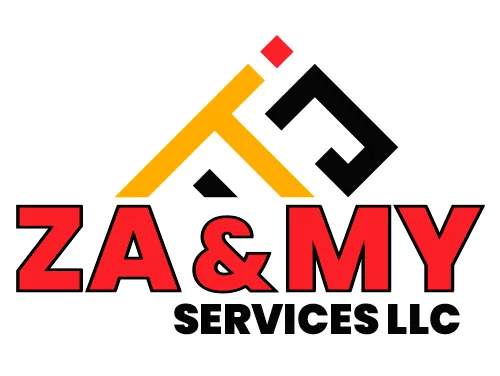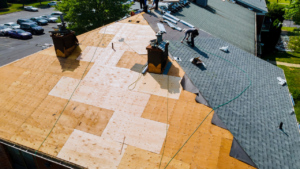A roof is one of the most essential components of your home, providing protection from the elements and maintaining the structure’s integrity. However, many homeowners tend to overlook or delay necessary roof replacements, unaware of the hidden dangers that can develop as a result. Ignoring timely roof replacement doesn’t just affect aesthetics or lead to small repairs; it can have long-lasting consequences on both your home’s safety and your finances.
Why Timely Roof Replacement Matters
Your roof is exposed to harsh weather conditions year-round. From heavy rain and snow to intense sun and wind, these elements take a toll on the materials that make up your roof. Over time, wear and tear are inevitable, and neglecting roof replacement can lead to serious structural problems.
Not replacing your roof when needed compromises its ability to protect your home. A roof that’s past its prime is more likely to develop leaks, mold, and structural weaknesses. These issues can escalate into expensive repairs, or worse, pose significant safety risks to you and your family.
Hidden Roof Damage: What You Can’t See Might Hurt You
One of the biggest misconceptions about roof maintenance is that if you can’t see the damage, it doesn’t exist. This is far from the truth. Hidden damage can lurk beneath the surface, compromising the integrity of your roof without any visible signs. Shingles may appear intact from the outside, but the underlayment, flashing, or wood decking could be deteriorating.
For instance, water can seep through the smallest cracks or gaps in shingles and settle into the roof structure. This moisture buildup leads to rot, mold growth, and weakened support beams. By the time you notice visible damage, like water stains on ceilings or sagging, the problem may have already caused significant damage to your home’s foundation.
Water Leaks and Mold Infestations: A Growing Concern
When you neglect roof replacement, you invite one of the most dangerous and costly risks—water leaks. A compromised roof allows water to penetrate your home’s insulation and walls. Over time, what begins as a small leak can result in extensive water damage that spreads throughout your home.
Along with leaks, mold can start to grow in the damp environment created by poor roofing. Mold infestations not only damage your property but also present health risks. Mold spores can cause respiratory problems, allergic reactions, and even more severe health complications for individuals with weakened immune systems. Addressing mold once it’s widespread is often expensive, adding significantly to the costs of neglecting your roof.
The Impact on Energy Efficiency
Another hidden consequence of delaying roof replacement is reduced energy efficiency. As roofing materials age and deteriorate, they lose their ability to insulate your home properly. A damaged or worn-out roof may have poor ventilation or inadequate insulation, allowing cold air to enter during the winter and cool air to escape in the summer.
As a result, your HVAC system works harder to maintain a comfortable indoor temperature, which leads to higher energy bills. In many cases, homeowners notice a sharp rise in their energy consumption but fail to connect it to the state of their roof.
Roof Replacement vs. Constant Repairs: Which Is More Cost-Effective?
Homeowners often delay roof replacement due to the perceived high cost, opting instead for patch repairs. While repairing specific problem areas might seem cost-effective in the short term, it’s essential to recognize that continual repairs add up quickly. A roof that requires frequent repairs is a clear sign that replacement is necessary.
When you invest in a full roof replacement, you’re ensuring the overall health of your home. Modern roofing materials come with advanced features such as increased durability, energy efficiency, and resistance to extreme weather conditions. A new roof can last 20 to 30 years or more, reducing the need for frequent repairs and giving you peace of mind.
Decreased Property Value: A Long-Term Financial Risk
Your home is likely your most valuable investment, and neglecting your roof can negatively impact its value. Potential buyers are wary of purchasing homes with old or damaged roofs, as they understand the high cost of replacement. Even if you’re not planning to sell your home immediately, having a well-maintained roof can increase your property’s market value.
When a roof is in poor condition, it may fail a home inspection, leading to complications in the sale process. Buyers may request significant price reductions or ask for repairs before closing, cutting into your profits and prolonging the sale.
Roof Lifespan: How Long Should a Roof Last?
The lifespan of a roof varies depending on the materials used, weather conditions, and the quality of installation. Asphalt shingles, one of the most common roofing materials, typically last 20 to 25 years. Metal roofs and tile roofs may last significantly longer, often exceeding 50 years with proper care.
However, the actual lifespan of your roof is also influenced by maintenance. Regular inspections and prompt repairs can extend its lifespan, but ignoring necessary replacements can shorten it drastically. Understanding the age of your roof and paying attention to signs of wear can help you avoid the risks associated with neglect.
Safety Hazards of a Neglected Roof
A weakened roof doesn’t just pose risks to the structure of your home—it also endangers the safety of the occupants. If your roof is severely compromised, it could collapse under the weight of snow, rain, or even during severe storms. Additionally, old roofs are more likely to have loose shingles or tiles, which can fall and cause injury.
Furthermore, fire hazards increase when roof materials deteriorate. For example, if your roof is made of wood shingles or if old insulation materials are exposed, they become more flammable, particularly in dry or hot weather.
Signs That It’s Time to Replace Your Roof
Knowing when to replace your roof is crucial to avoiding the hidden risks of neglect. Here are some common signs that indicate it’s time for a roof replacement:
Curling or missing shingles: This is one of the most obvious signs that your roof needs attention.
Sagging areas: A sagging roof is a clear sign of structural damage, often caused by water damage or rot.
Granules in gutters: If you notice an excessive amount of shingle granules in your gutters, it indicates your roof is deteriorating.
Visible leaks or water damage: Water stains on your ceiling or walls are clear indicators that your roof isn’t providing adequate protection.
Addressing these issues promptly can prevent more extensive damage and save you money in the long run.
FAQs
How often should I inspect my roof?
It’s recommended to inspect your roof at least twice a year—once in the spring and again in the fall. Additionally, after severe storms, it’s essential to check for any immediate damage.
Can I repair my roof instead of replacing it?
Minor repairs are possible if the damage is limited. However, if your roof is older or has widespread issues, a full replacement may be more cost-effective in the long term.
What are the most common causes of roof damage?
Weather conditions like rain, snow, and high winds are the primary causes of roof damage. Additionally, poor installation, lack of maintenance, and aging materials contribute to roof deterioration.
How long does a roof replacement take?
The timeline for roof replacement depends on the size of your home and the type of materials used. On average, a roof replacement takes one to three days.
Can a damaged roof affect my health?
Yes, mold growth caused by roof leaks can lead to respiratory issues and allergic reactions, especially in individuals with asthma or compromised immune systems.
What is the best roofing material for longevity?
Metal and tile roofs typically have the longest lifespans, often exceeding 50 years. Asphalt shingles are less durable but still offer 20 to 25 years of protection with proper maintenance.
Conclusion
Neglecting your roof replacement can lead to serious and costly consequences. From water damage and mold infestations to increased energy bills and safety hazards, the risks are numerous and often hidden from view. By staying proactive and replacing your roof when necessary, you protect your home, your health, and your finances. Don’t wait until it’s too late—invest in a new roof to ensure long-term security and peace of mind.






